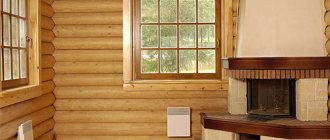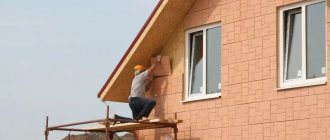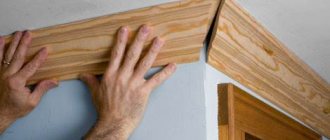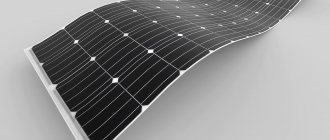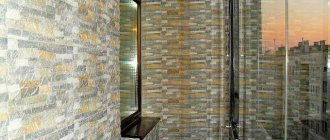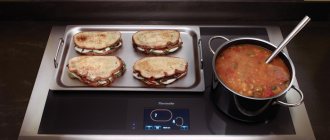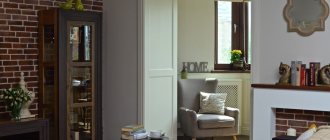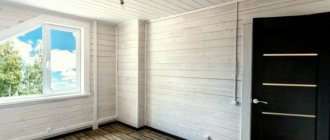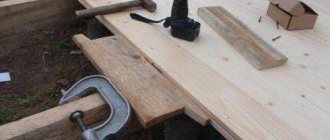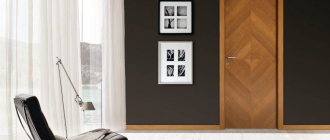Wooden lining is often used for interior or exterior decoration of housing. Its main advantage is the excellent type of coating with the highest environmental friendliness. Particular attention should be paid to the type of product, as well as the type of finishing material. This will make it much easier for the individual panels to fit together lengthwise and with each other. The article describes how to properly fasten the lining and what nuances should be taken into account so that the fastening retains its strength for a long time.
Vertical lining
With this layout of the boards, the sheathing is installed horizontally. The bars are pre-treated with impregnations against rotting and pests. The locations of the guides are marked on the wall in increments of 40-60 cm. The dowel or self-tapping screw is deepened into the wall by at least 50 mm. If necessary, the hole is drilled. The upper and lower elements should be as close as possible to the ceiling or floor so that the lining can be securely fixed at the edges. Corners and openings are additionally reinforced with jumpers.
Before attaching the lining, determine the most visible angle. The first profile is nailed down. Alternately, insert the board with a tenon into the groove of the previous element and fix it with fasteners to the sheathing. Verticality is controlled by the building level.
The hardware is driven into the bottom flange of the groove at an angle, the caps are recessed so that the ridge of the next lining fits freely into the recess. The last board is cut to the size of the remaining part and nailed.
Joints, abutments and corners are covered with slats, plinths, and layouts.
Installation technology
The width of the canvases is very easy to join, since they have corresponding grooves and protrusions. As a result of fastening to the sheathing or wall, various devices are used :
The latter allow you to obtain an even, continuous coating without visible traces of fixatives. This is achieved by the technology of fasteners, which are placed on the inside of each groove at several points on the canvas. They are attached to the wall surface or sheathing with studs, leaving the groove accessible for joining with the adjacent panel.
The advantage of this method is the excellent aesthetic qualities of the coating. Of course, if category B or even A lining is used, then marks from special nails are almost invisible , but in the case of Extra class material it is worth ensuring a clean surface without any damage or marks. This increases the strength and protective characteristics of the material, since high humidity causes areas with a damaged fiber structure to be most susceptible to rotting and darkening.
Lathing for lining: step-by-step instructions
Preparation of the bar
The material for work should be prepared in advance. The timber should be kept for several days in the room where the finishing will be done. This will allow the building materials to acclimatize, and their temperature and humidity will become similar to that in the room.
Next, the sheathing elements are treated with an antiseptic compound (if possible and, if necessary, with an insecticide). This can be done either using ordinary brushes, processing everything in order and carefully. If the volume of work is large enough, then you can build a small trough from boards and cover it with polyethylene. We pour an antiseptic composition there and dip each of the bars. This option will provide high-quality protection against mold and mildew.
Antiseptic trough
Preparing the walls
While the timber is drying, we prepare the surface of the walls. To do this, mark the width of the racks using a pencil and using a level so that all the lines are as even as possible. Such a “drawing” will allow you to clearly see how the entire structure will subsequently look, simplifying the work and controlling the correct location of the sheathing elements.
You should also determine the starting point for installing the sheathing. It can be the lowest corner available in the room (we find it using a water or laser level). After the necessary measurements, we draw out the wall and draw a horizontal line.
Marking Lathing with timber
How to hide wall defects
If the unevenness is significant, then it is necessary to secure the beam using special hangers, which should be positioned in a line (every half a meter) and secured perpendicularly. The prices for this type of fasteners are low, so the costs will not increase significantly. When fastening, the ends of the hangers are bent in the direction of the bar, after which it is leveled and fixed. This option is convenient due to its simplicity and accuracy: you can level surfaces quite quickly and easily.
Wooden wedges can also be used: they are the most important element for leveling significant unevenness in the surface of the walls. Prepare a certain number of wedges of different sizes in advance and treat them with antiseptics. As practice says, they tend to come in handy in most cases.
Hangers will help align the frames evenly
The installation of the sheathing under the lining is constantly monitored by level. We check the position of the bars and only then fasten them. To strengthen the angle, you can install a jumper in these places. This ensures maximum rigidity of the frame and simplifies fastening in corners.
Useful tips
Despite the simplicity of processing and ease of installation, there are several useful tips for lining to ensure that the coating turns out beautiful, durable and with the necessary properties of the finishing material. Some useful tips:
- To ensure that the size and shape of the canvas do not change as the material is used, it should be kept with a layer between strips of thin fiberboard in the room in which it is planned to cover the surfaces.
- If a batch comes across a “crooked” fabric, then due to the fragility of the connecting side grooves and protrusions, it is very difficult to insert it into a flat product. It is better not to use such canvases, but to use them for sealing places where trimmings are required.
- When using clamps, the protective oil coating containing metal particles must be removed from their surface. This will protect the wooden panels from accidental contamination (how to clean dirt on the lining?).
- To prevent burrs or chips from appearing on the canvas when self-tapping screws are used for fastening, you need to drill a hole with a thin drill at the site of the upcoming fixation.
- To disguise chips, joints and other damage between the canvases, you can use various paints and varnishes, wood putties or decorative elements, for example, thick twine or cord.
Wood is considered a very capricious material , which during operation is capable of changing its dimensions and shape. This must be taken into account when installing canvases on wall surfaces, especially in rooms with high humidity.
For the best result and invisibility of seams between strips of lining along the length, it is necessary to use an H-shaped profile or special thin wooden strips. However, installation with staggered seams will significantly save material, reducing its consumption due to the use of all scraps.
Lining is a smooth board that has grooves on one side and tenons on the other. The material is used for finishing and insulating premises. If you have previously purchased lining for finishing a room, remember that you need to store it in a dry place where sunlight and moisture do not penetrate. The material must be stored in its original packaging to prevent damage to the material.
The length varies from 2 to 6 meters, here you need to select it depending on the surface you want to finish, be it a ceiling, balcony or other surface.
Choice: wood or metal?
Professional craftsmen consider timber to be the most popular building material for sheathing under lining. Ease of use during installation work, small “weight category” - and creating a frame with your own hands will be easier and faster. This material also has sufficient functional durability. So we choose a wooden beam.
Timber for lining
We will use standard size bars - 50 by 25, 60 by 27 millimeters. This building material is almost ideal both externally and internally. But when purchasing, make sure that there are no defects or chips on it. It is also important to know the moisture level of the wood. Recommended – 16 percent, no more.
Tools and Fasteners
During the installation of wooden panels, various fastening methods are used:
- clamps , which are inserted into grooves and attached to the wall surface with studs;
- self-tapping screws , screwed directly into the canvas, fixing it to the sheathing made of wooden blocks (what is it for and how to make the sheathing?);
- nails designed specifically for fastening lining, with very small heads, 2.5-3 cm long and approximately 1 mm thick.
For cutting canvases the following is used:
- electric drill;
- jigsaw;
- regular hacksaw for wood.
The result is not always a perfectly even cut, so it needs to be carefully sanded using sandpaper.
Features of lining installation
In most cases, lining panels are not attached directly to the wall, but to the sheathing, which eliminates the occurrence of deformations and premature destruction of the finish.
The distance between the bars should not exceed 60 cm
Between the beams of the sheathing, as a rule, heat and waterproofing material is laid.
The thickness of the bars depends on the thickness of the insulation
Several lamella layouts are used:
- Vertical. Laying begins from any corner (preferably in the direction from the light, so that the joints of the panels are not obscured), the first board is installed with the groove outward.
This scheme is used when finishing rooms with high humidity (baths, saunas, opening verandas), since moisture is less likely to accumulate in vertical seams. - Horizontal from bottom to top. The panels are positioned so that the groove points up and the tenon points down.
- Horizontal from top to bottom. The groove looks down and the tenon looks up.
- Diagonal and combined. Complex designs can give a unique look to a room, but require professional execution.
Fastening elements must not only securely fix the parts, but also be as inconspicuous as possible so as not to spoil the appearance of the decorative coating. In practice, several types of fixing the lining to the sheathing are used.
Required: processing solutions
Do not neglect antiseptics and insecticides. This step extends the durability of the sheathing. The minimum level of treatment is a solution against fungus, rot, and mold. And insect control products should be used in houses standing on the ground - dachas, utility rooms. By the way, the cost of the compositions is not too high, and the right thing to do would be to play it safe and treat both the wooden frame and the wall with the ceiling in any room where the sheathing under the lining is being installed. The rules for using solutions are usually written on the packaging - read before you start spraying.
This is what a timber frame looks like
How to do something yourself, with your own hands - home craftsman website
AN EXCELLENT TOOL FOR CRAFTERS AND HANDCRAFTS AND EVERYTHING FOR THE GARDEN, HOME AND Cottage LITERALLY FOR FREE + THERE ARE REVIEWS.
Covering walls and ceilings with wooden clapboard is one of the simplest and cheapest methods of interior decoration. Lining is not a scarce commodity, and its use does not require professional skills or complex tools. However, as in any business, there are subtleties and peculiarities here. Dmitry Tokarev shares some of them.
Wood is a capricious material. Even if you buy the lining in a package during the dry season and make sure of its ideal geometry, do not rush to rejoice. In a room with new temperature and humidity characteristics, this material quickly takes on the shape it needs, not you. The longitudinal planes are bent, and the worst trick is to tighten the paneling with a screw.
Trick 1 – Conditioning the lining
My first trick. Having printed the lining, I put it in piles, lay it with spacer boards and tape it together along the edges and in the middle. Sawn strips of fiberboard are convenient as spacers. In this form, the lining remains for 6-7 days in the room where it is planned to be used. In the future, the geometry of the aged material will not float away.
Option #1
Connection of plastic and MDF panels:
- H-shaped PVC profile. Most often, joining along the length of plastic and MDF linings is done using H-shaped PVC profiles, as in the photo below. In this version, the planks are simply inserted into the profile on both sides. The downside is that such a profile is visible, and in the case of MDF it also differs in texture.
The H-shaped profile is considered universal, but it is visible
- Thin straight and corner strips. Manufacturers of MDF panels produce thin strips that are glued to the connection line; these strips can be straight or angular.
- T-shaped moldings . They are inserted into the gap between the panels.
T-shaped moldings for hiding the joints between MDF panels are very easy to use
Sequence of finishing work
The first step is choosing a wall decoration option. Fastening the lining can be done in two ways:
- Along the walls;
- Along the sheathing.
The first option is preferable in a wooden house, since wood tends to expand or shrink in size and “breathe”. If the base material is the same as the coating, their joint oscillatory motion will not cause multidirectional stresses leading to deformations and the appearance of defects on the surface.
In brick and concrete houses, before attaching the lining, a sheathing is installed, which can also serve as a frame for laying thermal insulation. It is convenient to place corrugated hoses for electrical wiring and heating pipes in the space between the covering and the wall.
The second is the correct measurement of the room and calculation of materials. This will help you avoid unnecessary expenses or waste time on additional trips to purchase missing components. The amount of lining is determined based on the area of the walls, excluding openings. The length of the ceiling and floor plinth is equal to the perimeter of the room. To decorate the corners you will need shaped strips. Materials are purchased with a margin of 10-15% for defects or other defects.
Wood is a living structure, sensitive to fluctuations in humidity and temperature.
Before starting work, it is unpacked, allowed to “get used” to the new conditions, and treated with antiseptics and fire retardants, if there is no factory preparation.
Before installing the sheathing or directly attaching the lining to the wall, prepare the surface - clean, level, seal the cracks, and coat with antiseptic compounds. This will protect the structure from the appearance of mold and fungi.
The third step is installing the sheathing. Most often it is made from wooden blocks with a cross-section of 20x30, 40x50 or larger. The thickness of the element depends on whether insulation will be laid under the lining. A ventilation gap is left between the thermal insulation layer and the coating, which prevents condensation from accumulating.
The frame pitch is 40-60 cm, the direction is perpendicular to the finishing boards. The space between the bars should be filled tightly with insulating roll or slab material. For residential premises this is usually mineral wool; outside, expanded polystyrene foam or other polymers are more often used. They are not afraid of moisture. Before attaching the lining, perform a vapor barrier and waterproofing. A film or membrane is used that allows the liquid to evaporate, but does not allow it to pass in the opposite direction.
The geometry is controlled using a bubble or laser level. Dowels or construction nails are used as fasteners for the sheathing.
Unusual ways
If laying on flat surfaces usually does not raise any questions, then joining the lining at an angle of 120 degrees is considered quite difficult even for specialists in this matter; here you need to accurately measure the parameters, since the length of the strip may be longer or shorter than expected.
To install the lining at 120 degrees, you will need a special j-lining, the length of which differs from the standard one. This material is more convenient to work with corners and you can carefully lay the lining at 120 degrees.
Docking at 120 degrees
Docking at 120 degrees occurs in several difficult ways:
- One plank is placed next to another so that there is no gap between them, so with the help of special objects you can measure any angle that you need.
- The fastening is installed through the upper points of the fastening corner using special roofing felt nails.
Docking at an angle requires the presence of a sheathing on which decorative lining is attached. What to do if the joints at the corners are very noticeable and are located with a large gap? Specialized stores sell a plinth-type plank that covers the joints and does not allow wind, moisture and air to pass through. The lining can also be painted with special wax paints, which are well absorbed into the wood and form a moisture-proof layer, again protecting against bad weather conditions if you live in a private house.
Ceilings in bathhouses and saunas are sometimes finished with lining; this material is moisture-resistant and unpretentious, mold does not form on it, which means it is well suited for rooms with high humidity. The material is considered a universal finishing material, which is why it is so often used in construction. You can choose material of different colors and lay it out in a checkerboard pattern so that the room is not only warm and dry, but also comfortable to be in. You can also choose lining from different materials, for example, oak, cherry; these types of trees themselves look beautiful and noble.
Headlining
The ceiling lathing is mounted on hangers or brackets. The horizontal level is set with a laser level, focusing on the lowest point of overlap. A fishing line is stretched along the walls, and frame bars are placed along it in increments of 25-35 cm for eurolining, 40-60 for other types. When finishing an entire room with clapboards, first the walls are sheathed, then the ceiling.
Before fixing the lining, all communications are laid and embedded parts for massive lamps are installed. If the ceiling is insulated, use a stapler to attach a vapor barrier film to the sheathing or wooden wall from the side of the ceiling. Thermal insulation is inserted between the frame bars and covered with a membrane. The rough surface should be directed towards the insulation.
They begin to install the lining on the side opposite to the entrance so that the last cut board does not catch the eye. If the length of the lamellas is insufficient, use a layout with joints along one line or with staggered seams. The border is covered with a decorative strip or the ends are carefully sanded. Then the docking point is neat and unnoticeable.
Option #3
Installation in a running manner. This option is the most difficult to install with your own hands.
It is being built in several stages:
- No one is going to hide the joints; on the contrary, they are highlighted , so they must be perfectly even. To do this, the ends are cleaned and ground at 90º before installation.
- To ensure that there is no gap at all when joining, lay the planks on top of each other and use a miter saw to cut off the edges of both at once.
- A grinder or electric planer is used to chamfer the outer part of the cut ; the bevel should be the same as the side bevels on the plank itself.
- The planks are connected end-to-end and the cut no longer spoils the view, but is part of the interior.
When installed staggered, symmetrical seams look better
You can do it simpler - when you reach the end of the row, you cut off the excess plank and start the next row with this trimming. But here it will not be possible to build a perfectly symmetrical picture of the joining seams.
Horizontal lining
The sheathing is mounted vertically from the corners, observing a step of 40-60 cm. To fix the insulation, additionally nail horizontal jumpers every 1.2 m or arrange an additional frame so that the slabs do not slide down. Before attaching the lining, a vapor barrier, heat insulation and waterproofing are laid.
Installation of lamellas begins from the top element, since the last bottom strip is usually trimmed. At the ceiling level, a whole lining looks visually better, and a non-standard width board near the floor will be covered with a plinth.
When fastening the lining horizontally, the tenon is directed upward. Gently tapping a piece of wooden profile with a mallet with a rubber tip or a hammer, install each subsequent board in place and secure it with fasteners from below. The first and last element, as well as short pieces less than 10 cm long, are nailed or secured with self-tapping screws.
If the wall is sheathed from the bottom up, the board is secured to the sheathing from the bottom side, and a self-tapping screw is screwed into the tenon along the top, flush with the surface.
The next panel is placed on the ridge and secured with hardware into a tenon. The last lining is fixed in the same way as the first.
